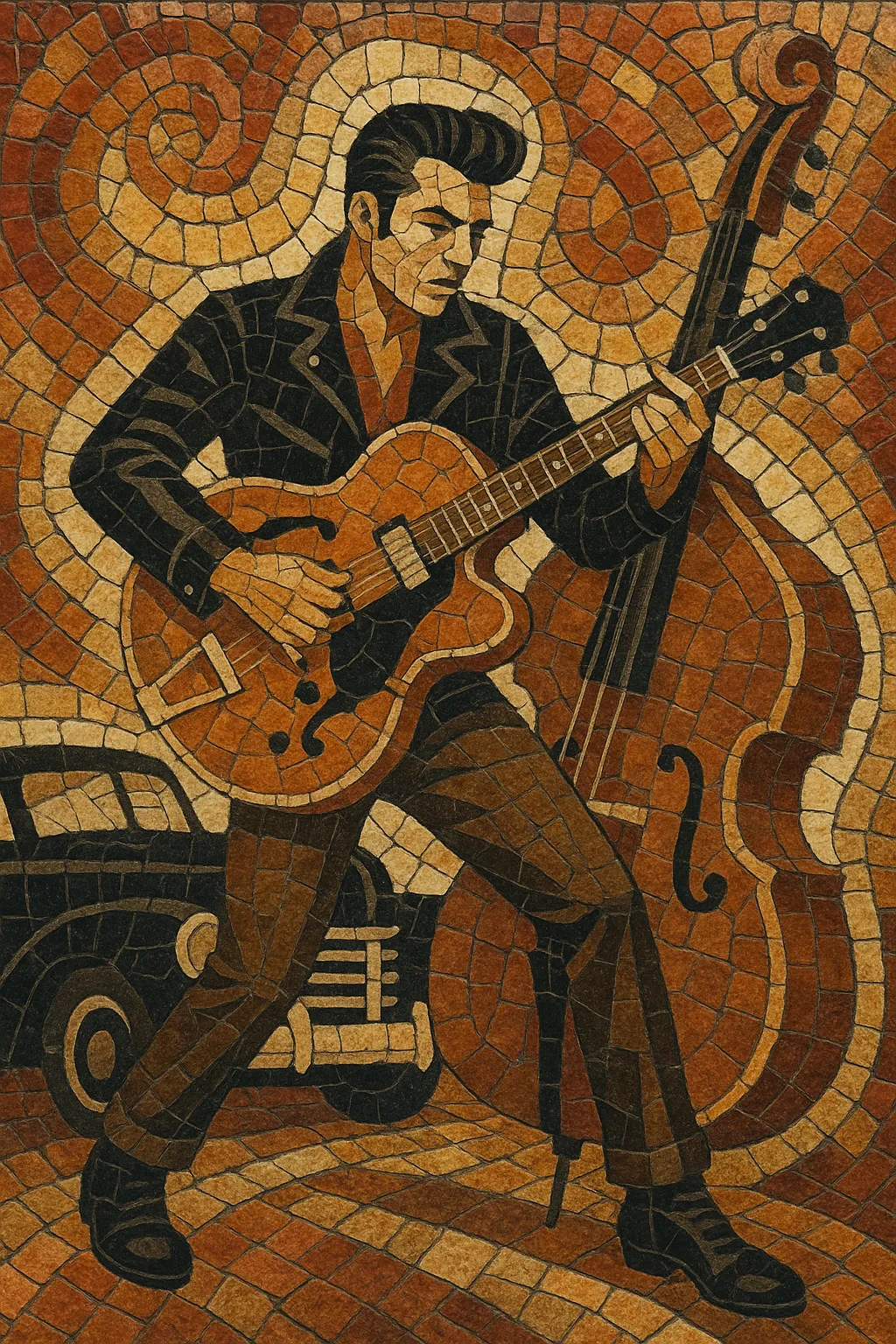Rockabilly is one of the earliest styles of rock and roll, fusing the twang and storytelling of Southern country ("hillbilly") with the driving backbeat and boogie of rhythm & blues and jump blues. It is marked by slap‑back echo on vocals and guitar, slapping upright bass, twangy hollow‑body electrics, and energetic, danceable grooves.
The classic rockabilly sound emerged from mid‑1950s Memphis studios such as Sun Records, where minimal drum kits (or none at all) mixed with percussive bass and bright, overdriven guitars. Songs are typically short, hooky, and built on 12‑bar blues or simple I–IV–V progressions, with lyrics about love, cars, dancing, and youthful rebellion.
Rockabilly coalesced in the American South—especially Memphis, Tennessee—when country (then often called "hillbilly" music) collided with rhythm & blues and jump blues. At Sun Records, producer Sam Phillips sought a new sound by pairing country singers with R&B rhythms, tape slap‑back, and twangy electric guitars. Elvis Presley’s 1954 "That’s All Right," Carl Perkins’ "Blue Suede Shoes," and Johnny Cash’s early Sun sides exemplified the lean, percussive feel: slapping upright bass, minimal drums, and echo‑kissed vocals and leads.
By 1956–1958, the style surged nationally. Gene Vincent (“Be‑Bop‑A‑Lula”), Eddie Cochran (“Summertime Blues”), Jerry Lee Lewis (“Whole Lotta Shakin’ Goin’ On”), and Wanda Jackson brought rockabilly to pop charts and TV stages. The music’s signature elements—12‑bar blues forms, I–IV–V harmony, fast shuffle or two‑beat “train” grooves, and hot guitar solos—made it perfect for dancing and teen culture. Even artists often filed under general rock & roll (e.g., Bill Haley & His Comets) carried clear rockabilly DNA.
By the early 1960s, smoother pop and the surf/beat explosions overshadowed rockabilly, though its guitar language fed surf rock, British beat, and garage bands. In the 1970s–1980s, a revival blossomed: U.K. and U.S. scenes celebrated vintage gear and fashion; artists such as Robert Gordon and the Stray Cats refreshed the style, while The Cramps’ psychobilly fused rockabilly with punk and horror aesthetics.
Rockabilly remains foundational to rock guitar vocabulary and stagecraft. Its rhythmic slap, echoing leads, and rebellious verve shaped rock & roll, garage rock, surf rock, country rock, punk rock, and psychobilly, and it continues to thrive in niche festivals, vintage‑gear circles, and contemporary roots recordings.


